Canadian National Railways #5080
Introducing a recent addition to the Aspen Crossing collection. These guys, operators of a popular excursion train that’s just a short drive away from Calgary, already own many pieces of vintage railway rolling stock. It’s a little slice of train heaven and they have so much they’re running out of space. And they’ve since brought in more! Here they’ve stepped it up a notch, something that has everyone including us at BIGDoer.com standing and up and taking notice. No way? Really? They can’t be serious?
We’re speaking of Steamer #5080, over a century old, that it’s hoped can be brought back from the dead and made to run again. Imagine it, a tour train (and they have many, of different themes) lead by an operating steam locomotive, this fire breathing dragon. That would be I N C R E D I B L E. It’ll be an ambitious and costly undertaking and they’re going to be watched closely. We’ve known them for some time (and consider them friends), and have even published a couple pieces on their operation and collection and they’ve demonstrated a propensity to do what they say. It’ll take time for sure.
In this post we take a look at this ancient iron horse, soon after its arrival…by truck of all things. For shame – haha! Soon after out visit it would again be be moved, properly by rail this time, a short distance from here at the offloading point in the tiny community of Mossleigh to the Aspen Crossing venue a few clicks away.
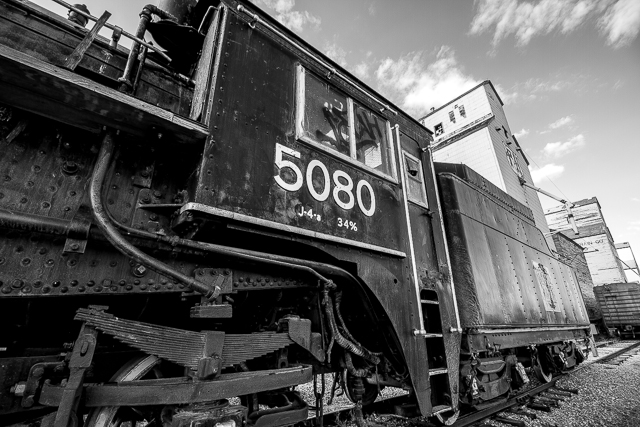
Meet Canadian National Railways #5080.
In the hours leading up to twilight, we’re witness to something cool. It’s all about the heavy metal. And a backdrop to it all, the town’s historic grain elevators and other stored rail equipment. The forecast is for good times.
Locomotive #5080 was built in 1914 for Canadian Government Railways. This nationalized firm rescued a number of failing lines circa World War One and had a hodge-podge of track stretching from Manitoba to the East Coast. Later, with the addition of Canadian Northern Railways and the Grand Trunk Pacific, both on shaky financial ground, all were amalgamated to become Canadian National Railways by 1920. While at the CGR the locomotive carried the number #453.
Built at the Montreal Locomotive Works, one of the big two steam locomotive manufacturers in the country (Canadian Locomotive Company, Kingston Ontario being the other), it was one of five in that order.
Under Whyte notation #5080 is a 4-6-2, commonly known as a Pacific type. There’s four smaller lead wheels for stability, six drivers to put power to rail, with a two smaller wheels trailing and supporting the firebox. This type was generally built for speed over brute force making them best suited for short to medium-sized passenger trains. It’s here their ability to accelerate quickly from stops and sprint between stations was a distinct advantage. They could pinch hit on modest-sized freights as needed, however, and did so often enough. But pulling people is where they were truly at home. Maybe soon it’ll come full circle if it can be resurrected.
Locomotive #5080 was one of seventy seven J-4-(x) class locomotives (numbered 5080-5156) all built to similar specifications in the years 1914-1920 for both Canadian Government Railways and later Canadian National. And this one was the first. Both builders spoken of earlier contributed to the class. In addition the CNR rostered hundreds more Pacifics in both J and K classes of varying sizes and capabilities mostly inherited from those predecessor railways.
The “34%” seen on the side of the cab translates into the the tractive effort available (pulling force), in tens of thousands of pounds. So 34k. This makes it no powerhouse, but still it was versatile. The tall wheels could make it a bit “slippery” if the train got heavy and could spin instead of grip if worked hard.
In contrast a modern freight locomotive today can produce TE in the 150k range (or even more), so over four times that of the steamer. But hey, so much has changed in the century that’s passed.
In the late 1940s period (or soon after) the locomotive was converted from a coal to oil. Following behind is a tender holding that fuel and the water needed.
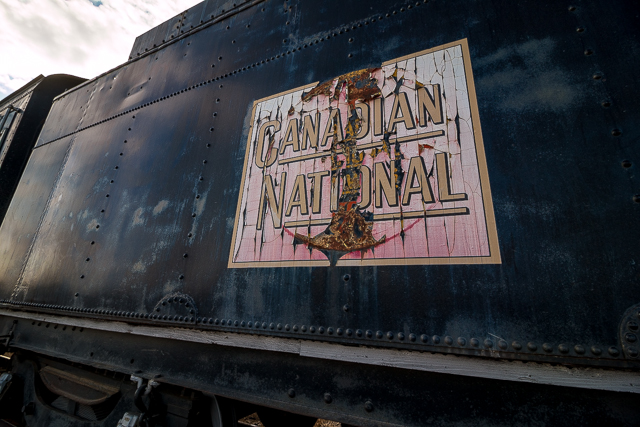
Looking a little ragged.
It seems #5080 spent most of its working life, or at least its later working life, here out west. In the mid-1920s it was involved in a pretty serious mishap (a collision or maybe derailment?) in Jasper Alberta. Retired about 1960-ish, it was later donated to the city of Prince Albert Saskatchewan, who put it only display at the Exhibition Grounds. And there it sat until recently before being picked up by Aspen Crossing. Open to the elements for close to sixty years it’s looking a tad neglected, haggard and weather beaten. That’ll buff out!
Efforts we’re made to keep it in PA, but the interest and funds could not be raised. It’s really all about the money, and maintaining a steam engine, even one on static display, requires a lot. Kudos to those people for trying. Sort of a sad ending in a way, that it left its home.
We’re told the locomotive is mechanically complete, or mostly so, and a pretty good candidate to steam again. Still, it’s a long road ahead. Cheers to Aspen for committing to what is no doubt a huge and daunting project. We’ll be watching what goes on here.
It was given a thorough greasing prior to being pulled down the track a few days after our visit.
An interesting tid-bit: steam locomotives have tires, steel rings press-fit (with lots of heat) onto the diver centres as a replaceable wear component. Every so often old ones would be replaced with new as needed. Dates etched into these ones tell us it was last done about 1957-ish, so late in the service life of #5080. Still, some wheels show marked wear (grooving), so the locomotive must have kept busy to the very end. There’s a fair bit of meat left on the tires so the resultant reprofiling should still leave sufficient material behind for proper operation. Fixing this will require a specialized wheel lathe, something not all that easily found we suspect.
Under the locomotive on the elevator siding, rails made in Germany in 1902 by two different firms. That’s some old track! The branch line on which Aspen Crossing operates, dates from 1930, so this would have been relay rail, stuff pulled up from other lines for any number of reasons, and recycled by placing it here. Aspen Crossing runs on the remains of the Canadian Pacific Railway’s Lomond Subdivision closed about 2000. It was a sleepy grain branch.
Keeping #5080 company is an eclectic mix of old rolling stock in storage. Included in that is a MLW RS23 diesel, ex-CPR, we bumped into last year in storage on an industrial siding (see: Gas Plant Collection) and a sweet little locomotive that once worked at a Manitoba and later an Alberta Sugar Plant. In the following weeks, we came back to photograph it under the stars, which will be seen in a coming post. Some really cool pics came out of it. Towering above it’s the town’s three 1930 built grain elevators (this: Prairie Sentinels – Mossleigh Alberta).
Also seen are some old cabooses and a number of ancient boxcars we think we’re used in a recent movie shoot. Sitting there next to the grain elevator had us thinking we’re time travellers. Flashback to 1949!
Aspen Crossing trains run from Spring to Fall (and around Christmas), so with our visit having been in the late winter it’d be a while for the next one to pass. Team BIGDoer was lucky enough to have been on a couple runs before. See: Train Day at Aspen Crossing and Twilight Train.
The sunset makes for spectacular photos – let’s give credit where credit is due – Mother Nature made the shots. After night fall, one final photo with a few stars showing. Goodnight #5080. Till we meet again next time.
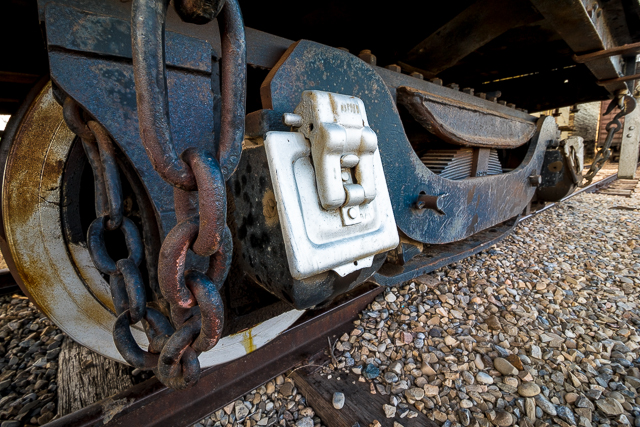
Supporting the tender.
Joining us this adventure is a great photographer and long time friend Byron Robb. It’s always more fun to do it in good company (and with cool subjects). At one point came the gravel guys, supplying railway ballast to Aspen Crossing, curious on why we showed #5080 so much attention. Perhaps trains aren’t their thing. These were the only people we ran into that evening. Love it when the place is all ours.
If you know of or have something interesting you think we should see and document, by all means message us. We’d love to hear from you. Be it vintage machinery, or some old building, we’re always game and up to the task.
They’re saying…
Please don’t stop what you’re doing it’s so amazing. Takes me back to places that one can only dream about. Thanks for all that you do. Rebecca Singhal Patel.
More locomotives…
Gas Plant Collection – some rare beasts here.
CNR #1158 at the Western Development Museum – another CNR steamer.
Aspen Crossing’s new locomotive gets delivered – at this same location.
Locomotives of the Great Sandhills Railway – out in Saskatchewan.
If you wish more information on what you’ve seen here, by all means contact us!
Date of Adventure: March, 2019.
Location: Mossleigh, Alberta.
Article references and thanks: Jason Thornhill, Aspen Crossing, Canadian Trackside Guides, Trainweb.org/j.dimech/roster/steam.html.
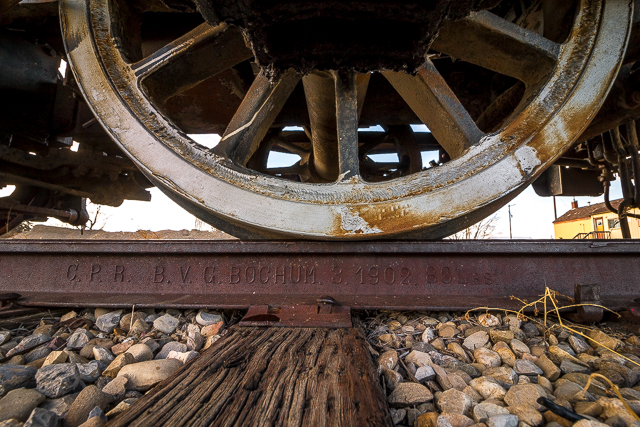
On ancient track.
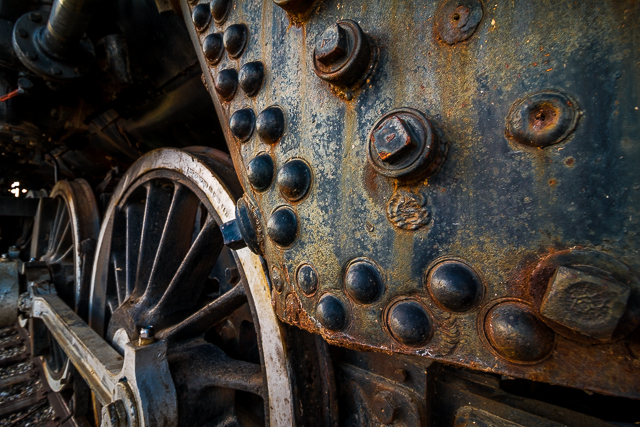
Heavy metal of another kind.
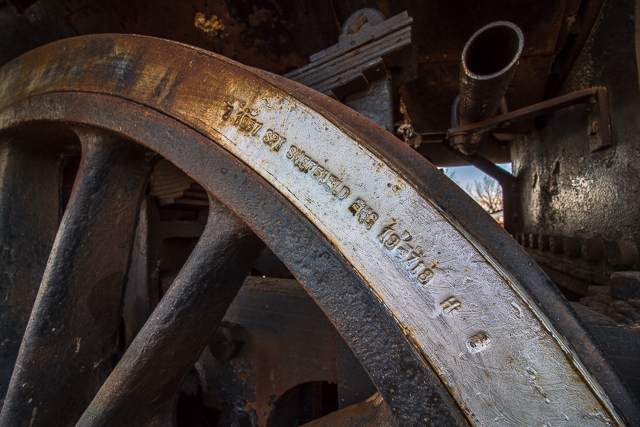
New “tires” in 1957.
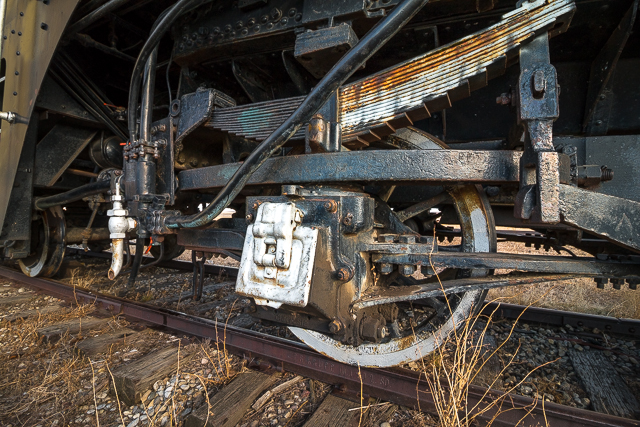
Under the firebox.
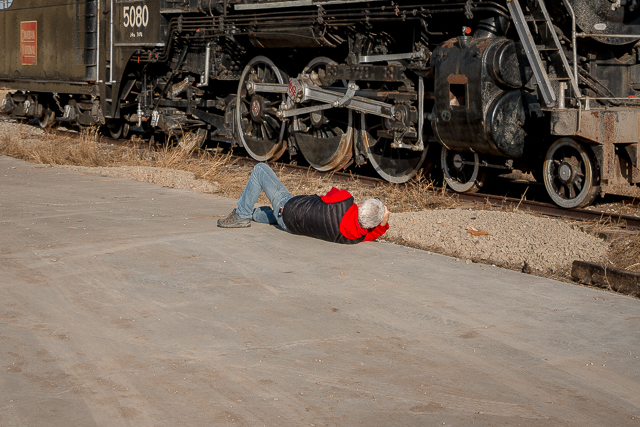
Byron Robb’s lying down on the job.
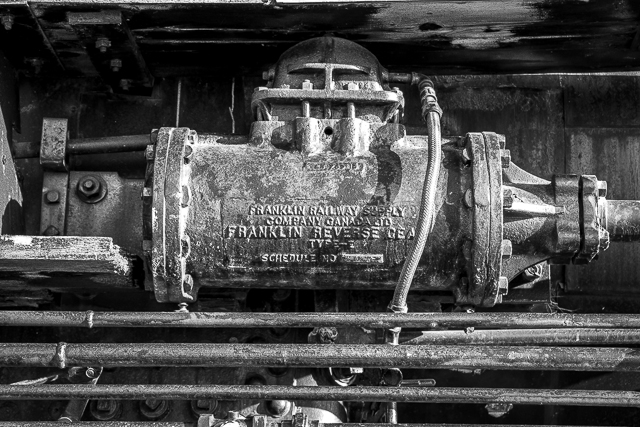
To put it in reverse.
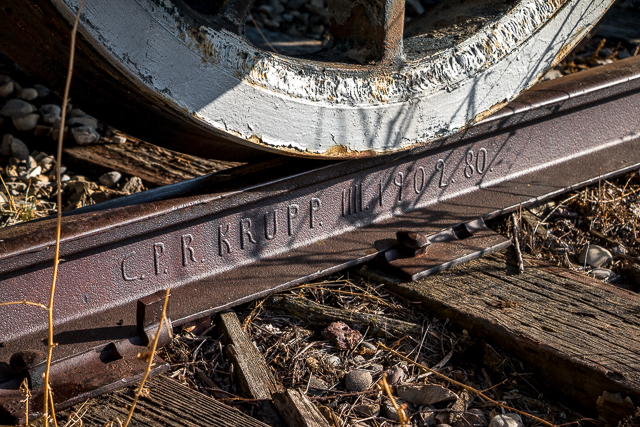
Rails made long ago and far away.
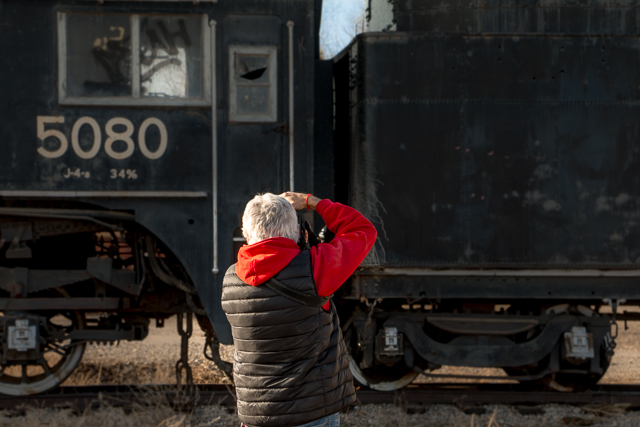
It’s always more fun to shoot with friends.
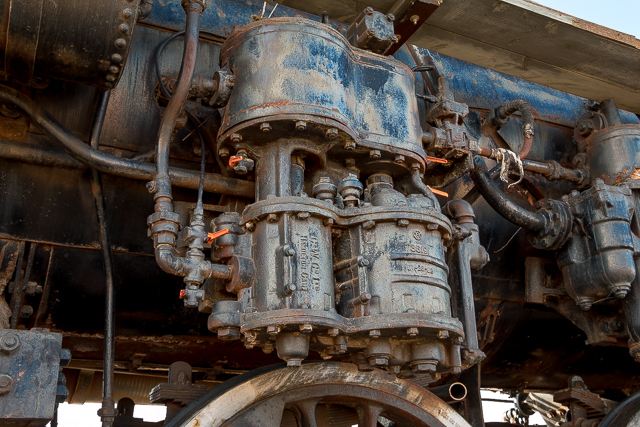
The air compressor for the brakes.
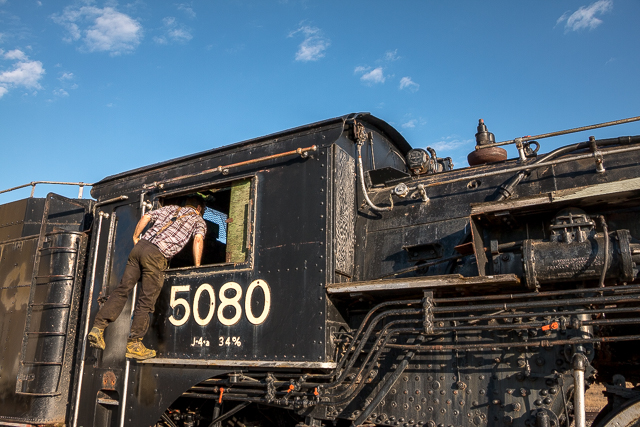
The gravel guy.
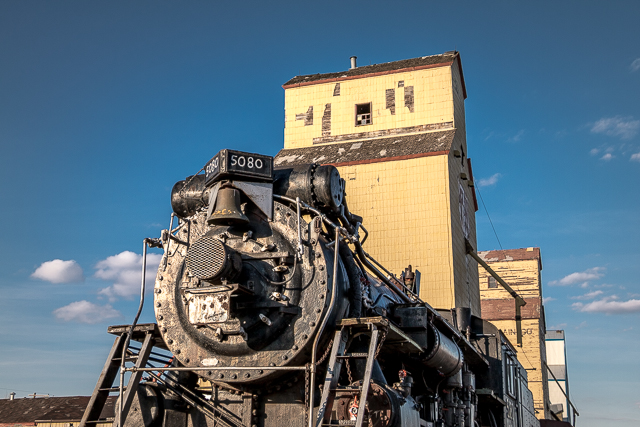
Mossleigh’s iconic grain elevators are a backdrop.
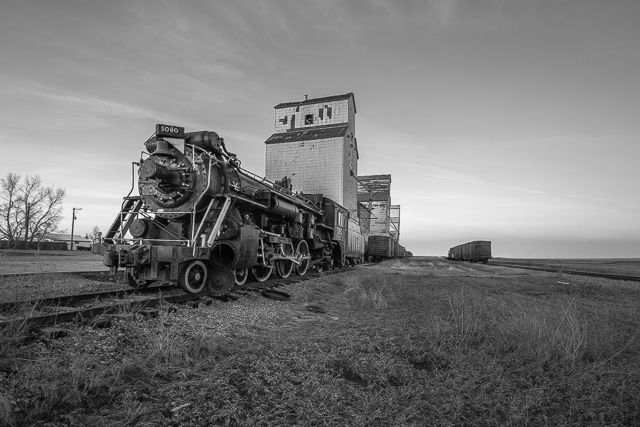
#5080 used to work for Canadian National Railways.
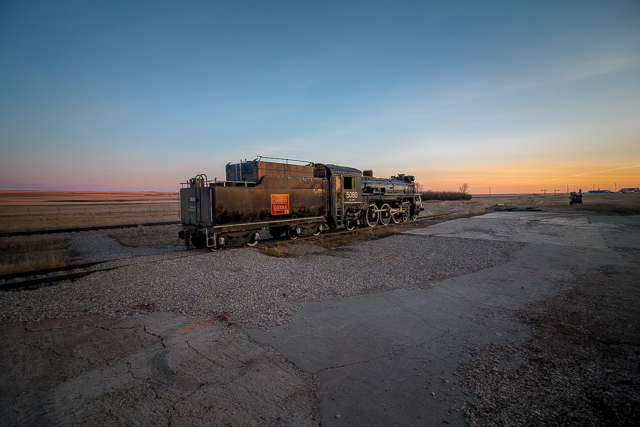
It sat on display in Prince Alberta SK before coming here.
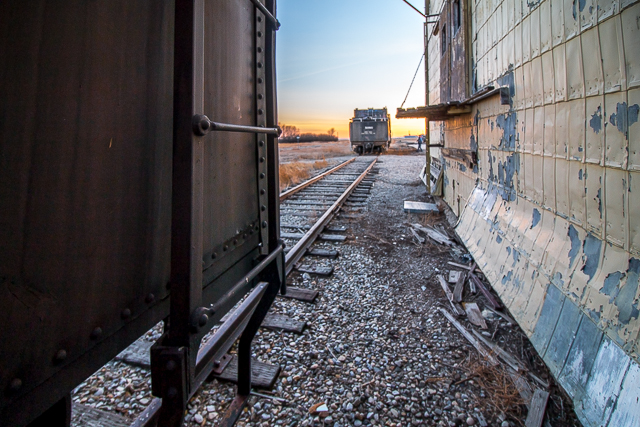
Glorious colours in the sky this evening.
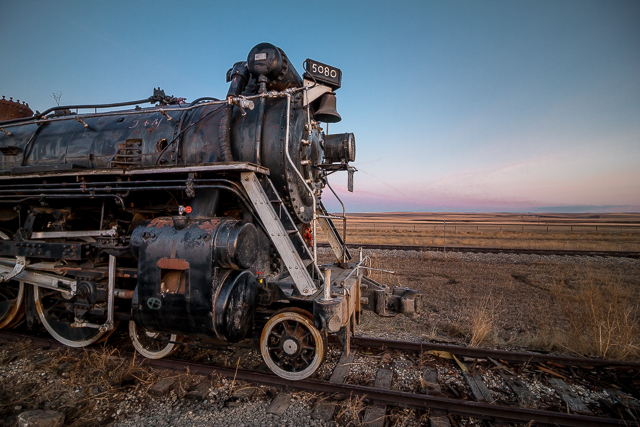
Soon after our visit, it was moved to Aspen Crossing.
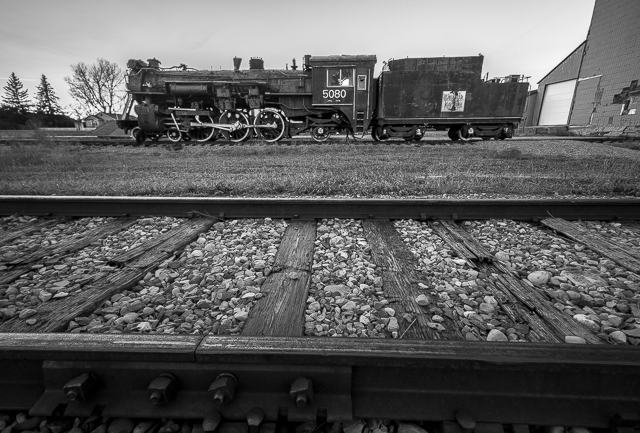
Built in 1914, in Montreal Quebec.
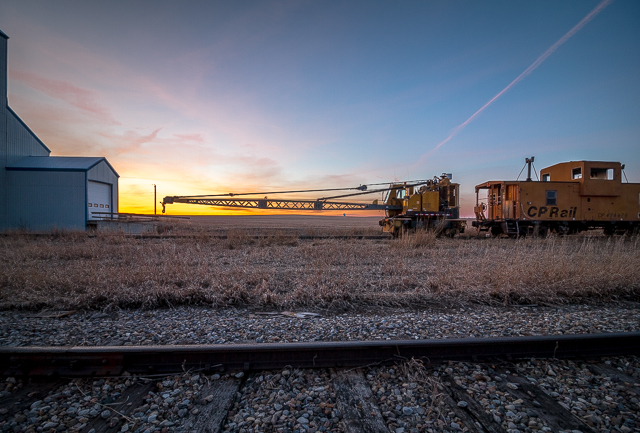
There’s other railway stuff here.
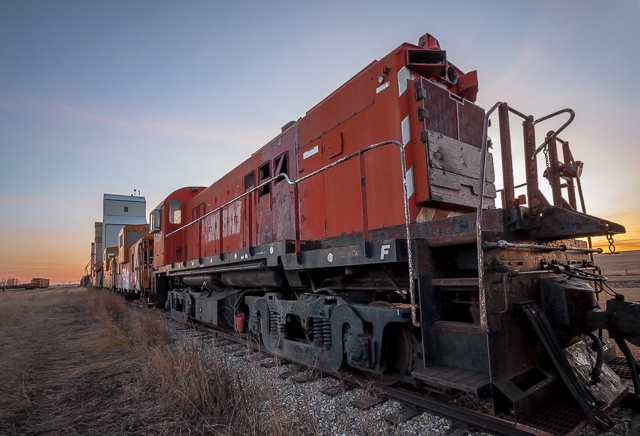
We’ve crossed paths with this one before.
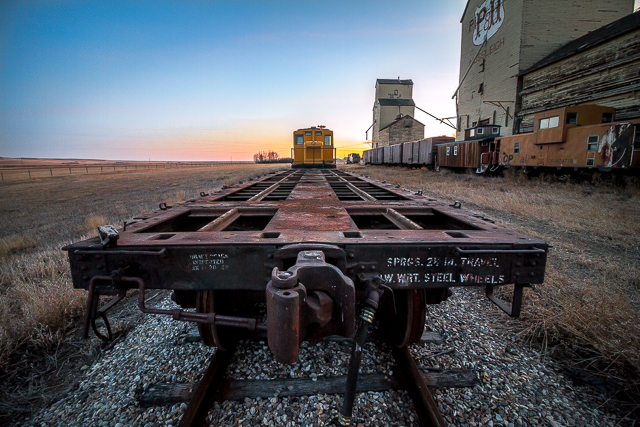
So much stuff in the collection.
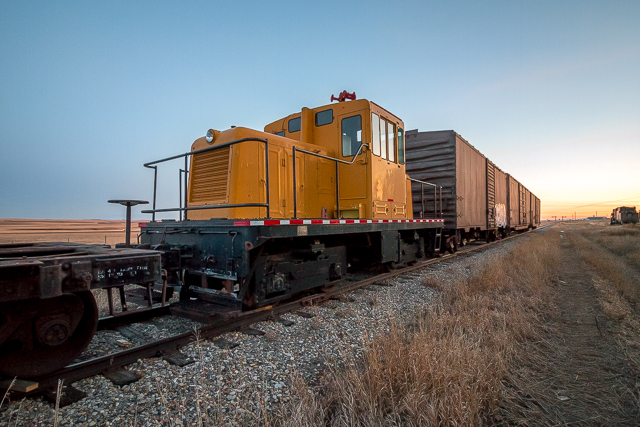
A “sweet” little locomotive.
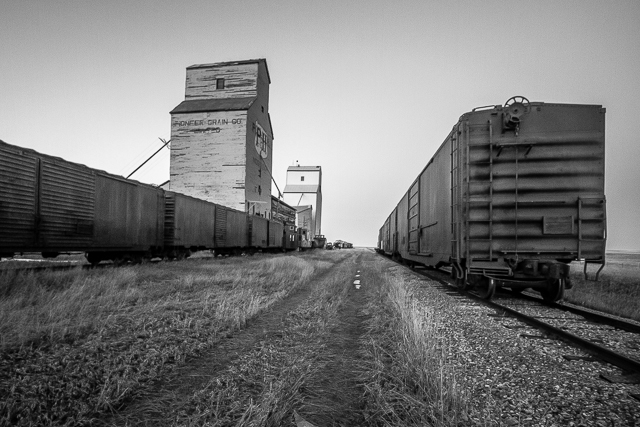
1949 or 2019?
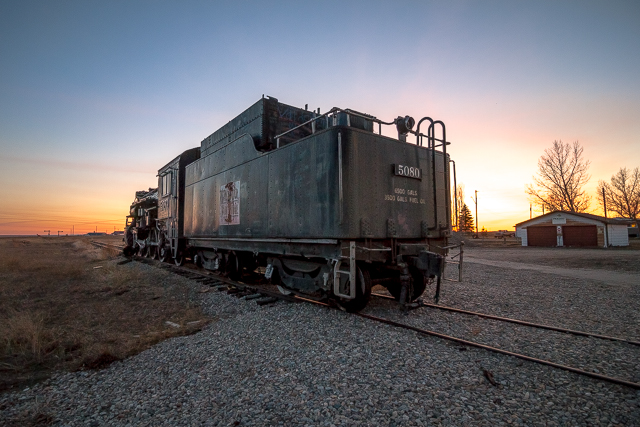
To be un-retired.
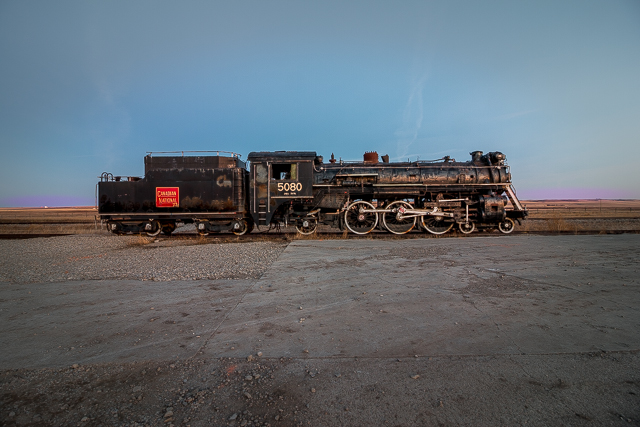
It’s hoped it can be made to run again.
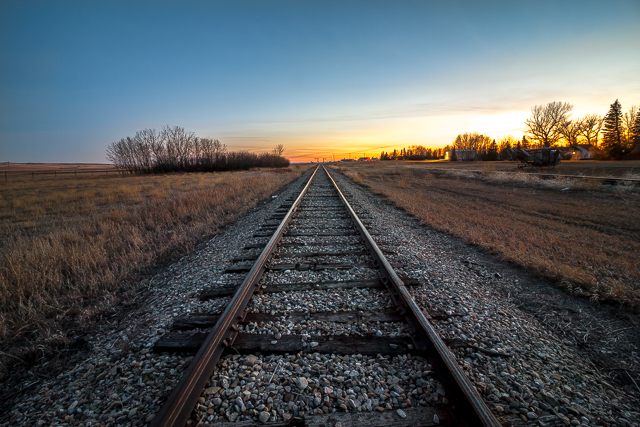
No tour trains this day.
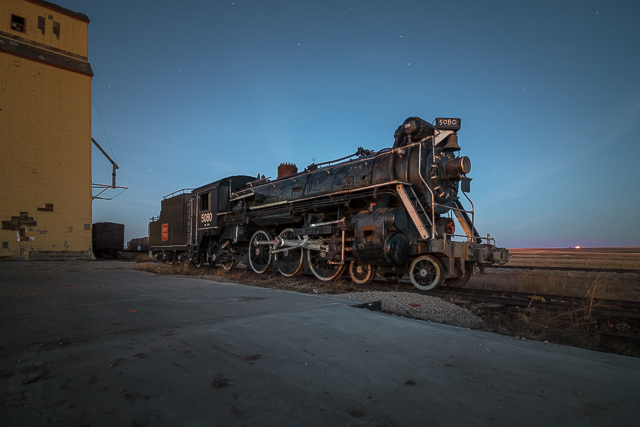
Night falls on “Pacific” #5080.

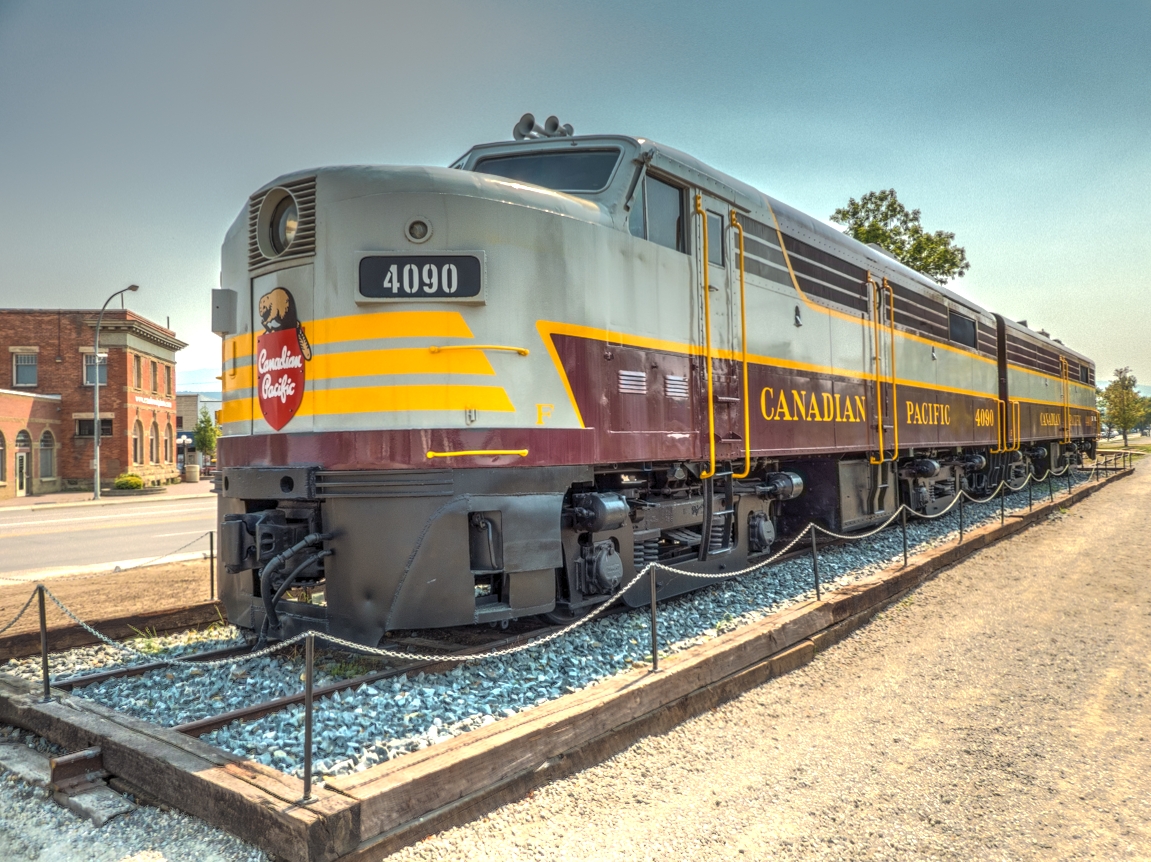
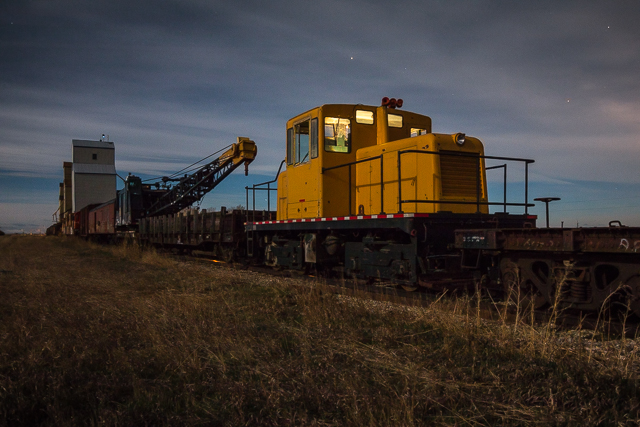
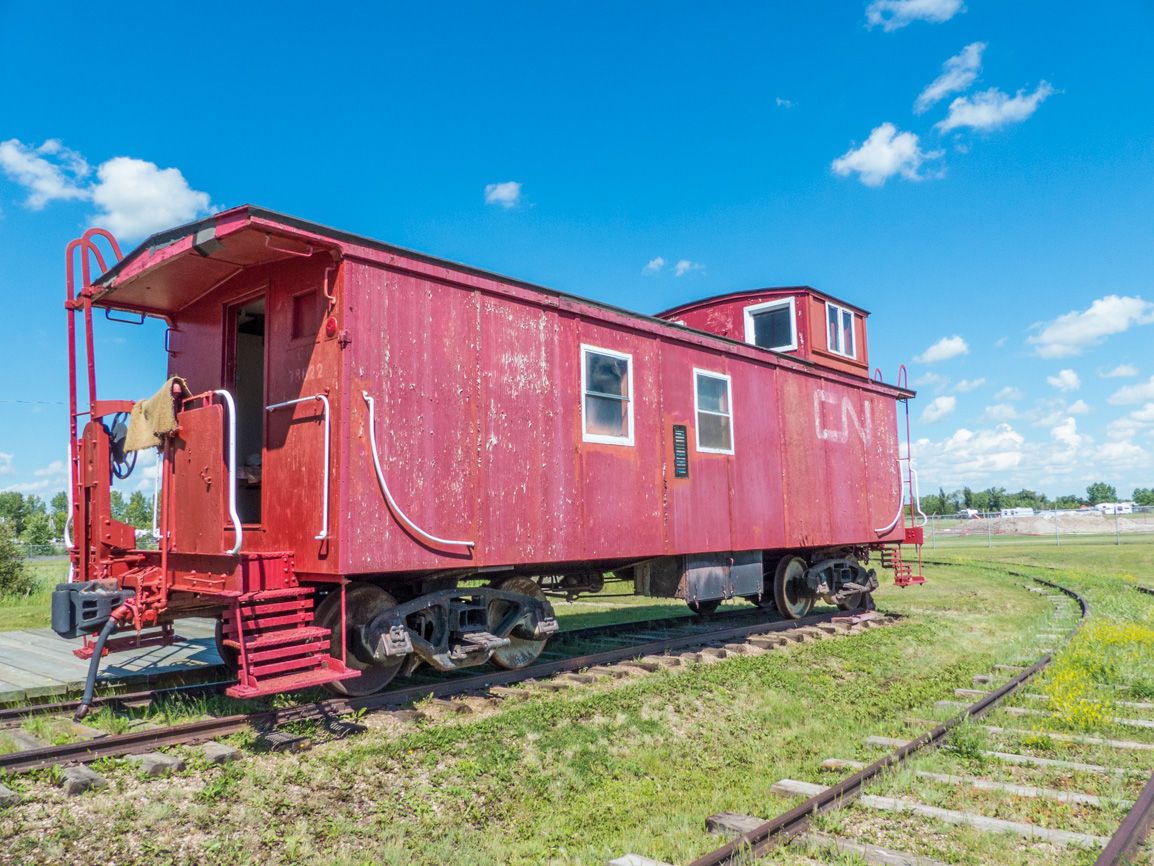
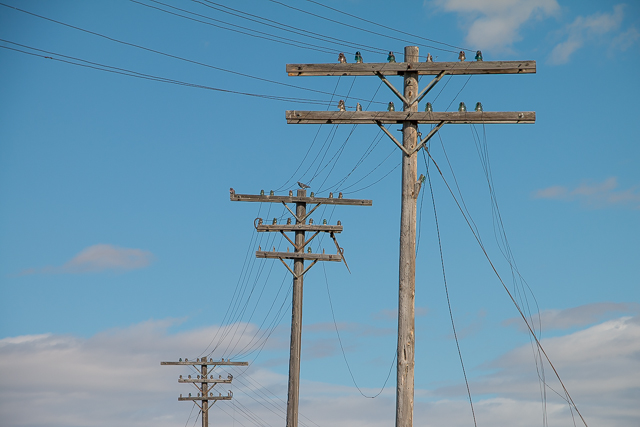
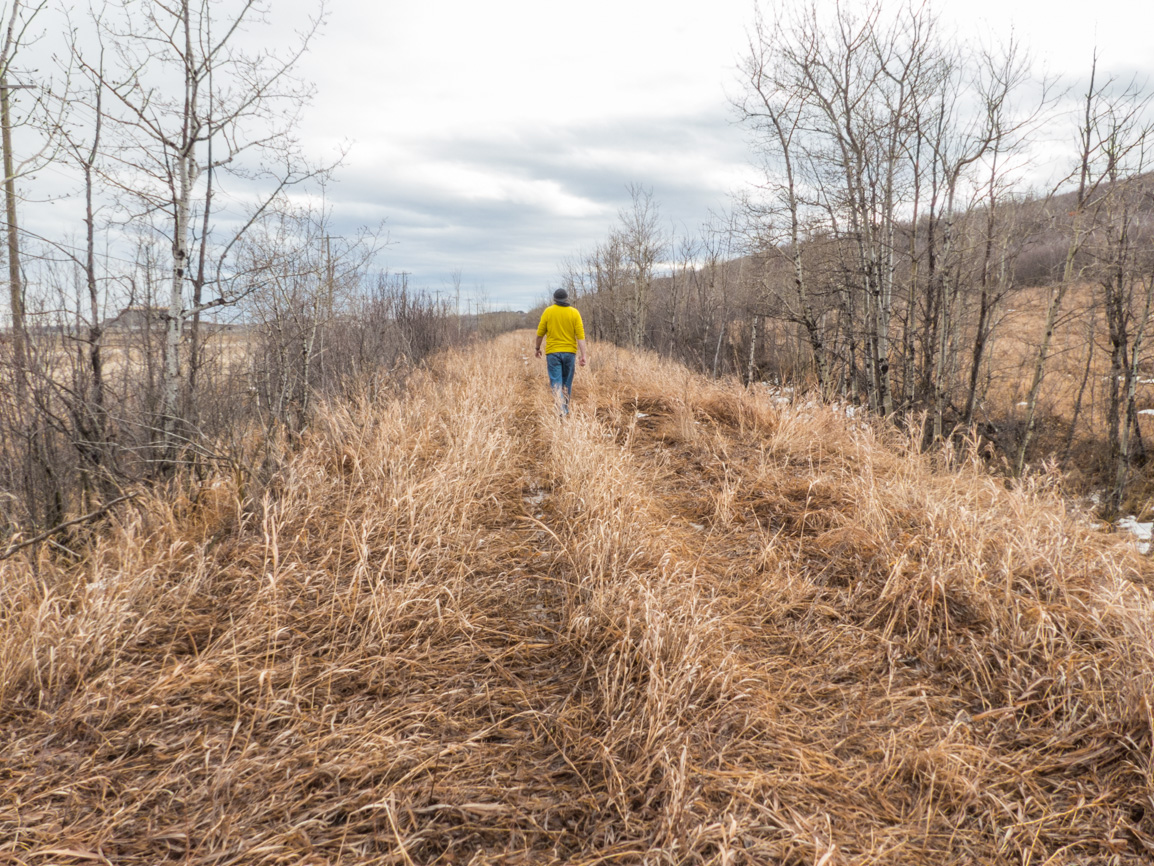
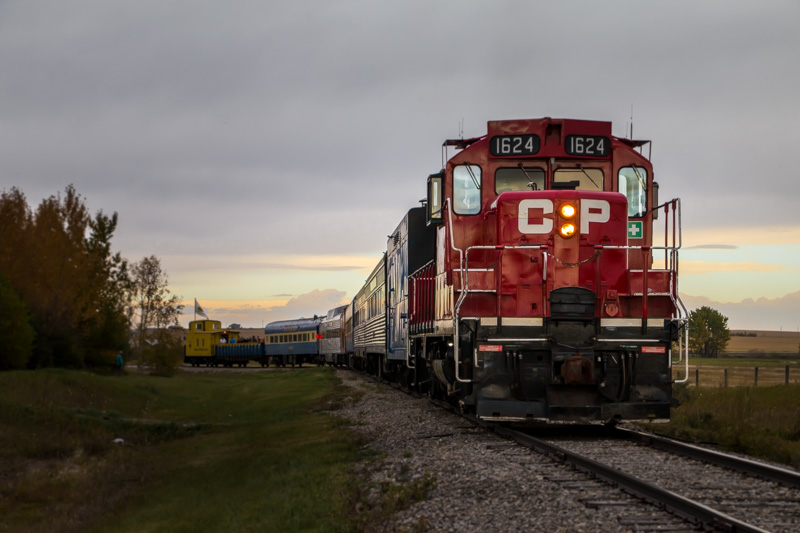
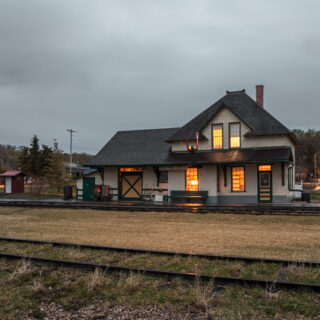
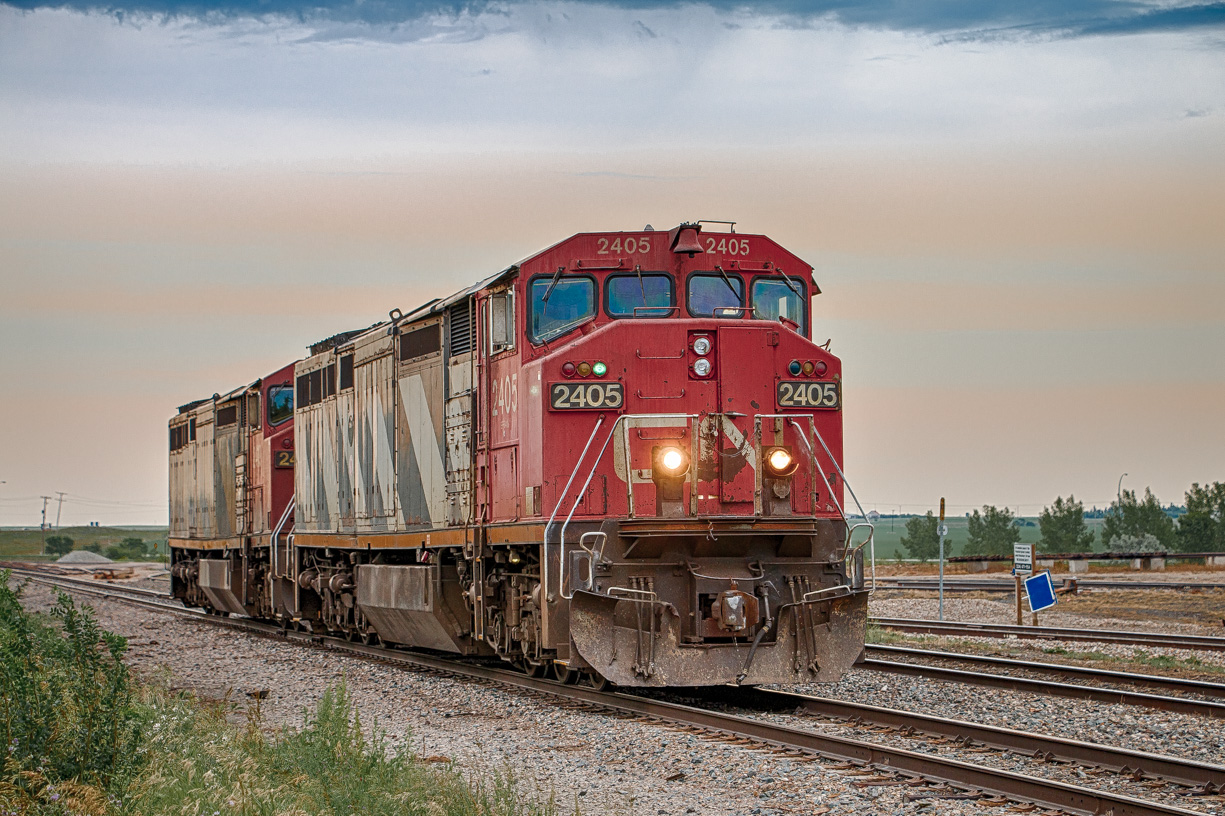
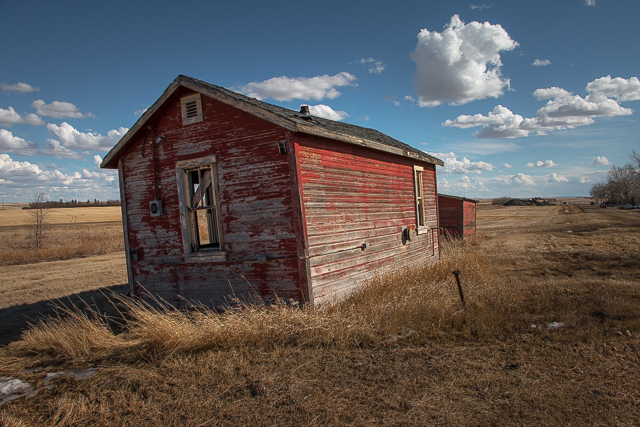
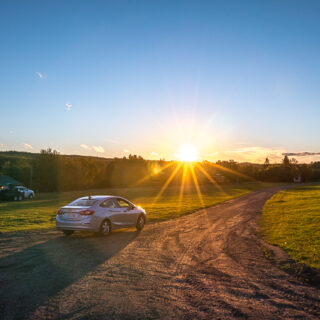
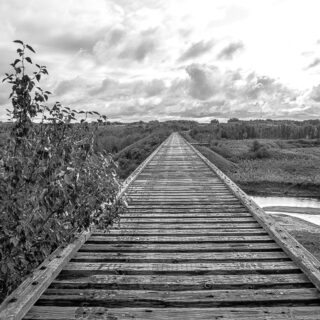
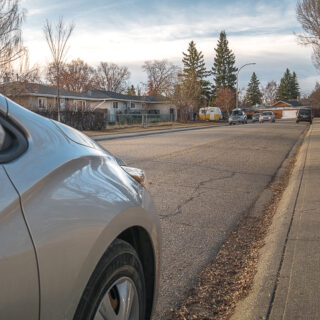
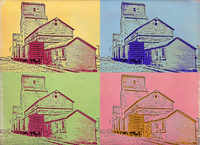






Photographed and captured some video footage of her being loaded up in PA. A sad fate for the city, but rightly deserved for the neglect it faced. A group had consulted with several individuals in Alberta in the early 2000s with a hope to get it operational for a tourist railway on Carlton Trail. Never came to be after the quote exceeded a million dollars.
Awesome and don’t be scared to share a few photos of that here. It’s sad how many pieces of historic railway equipment have fallen into disrepair, but with no money that outcome is inevitable I guess.
Fantastic. Looks like you and Bryon had a great time.
Always have a blast with him.
I am patiently waiting to ride behind this loco!
Us too. Calling shotgun!
My son was just enthralled with it when we went this summer. So was his dad 😂 she’s a bit rough but I think she’ll run again
No one can resist the charm of an old steamer. It’s a big project bringing it back to life. Yes, looks a little ragged.
Great news and can not wait to see it run!
They have work cut out for them, but we’re confident they, if anyone, can pull it off.
My wife and I have travelled there to see one of the last remaining type E Grand Trunk Pacific stations in existance.
You mean the ex-Unity Saskatchewan Station nearby?
Fantastic shots! You must have an incredible camera. Please share what you use.
Yes, of course, it’s the camera. Just like the best art comes from the best paint. We use a middle of the road Canon 70D with mostly kit lenses. Now you know.
Ouch! Sensetive much?
Yes, yes we are. And we fly off the handle and get all crazy and then we start flipping tables. It gets ugly.
Fingers crossed that Jason has enough $$$ to fully restore her to operation!
Yes, all that money. It’ll take a lot. But if anyone has shown the ability to face challenges head on, it’s the Aspen folks.
hope they get it running
We’ll be cheering them on.
That is just fantastic. I look forward to seeing it when we visit Aspen Crossing next year.
Now sure the schedule to make it run, but I suspect it’ll take some time. Still, it’s amazing to see even if static.
Wow…incredible news Aspen Crossing. The photos of this old steamer are wonderful.
They’re ambitious folks and we love them for it. Glad you like the pics – we so enjoyed shooting them.
I wish they could put a wye in to the main track so they could turn it around as the side showing to the parking lot where it’s parked is the badly sun faded and weathered side not the nice side in the photo.
A wye would come in handy anyway. Yes, the bad side is showing where it was last parked. Not sure if it’s moved since then.
That is awesome I cant wait to see it running!
If anyone can pull it off, it’s these guys.
That’s so fricken cool 😎
I know dude!
What an exciting project and such great photos. You two are masters.
We’re just humble photographers. But it so pleases us to hear you say that. It’ll be interesting to see what happens with the locomotive down the road.
Really great photos! Sunset, trains and grain elevators!! Perfect!
It was a magic evening. Sometimes all the stars align and offer up something spectacular like this.
So excited to see it for myself!!
It’s now on Aspen Crossing property. Last we saw, it was by the parking lot near the dining car restaurant.
That would be wonderful, to have it running again.
Finger’s crossed!
Restoring a steam engine to service is an expensive and time consuming process – let’s hope they can pull it off without going bankrupt! 😉
Aspen Crossing is a great operation, well worth visiting.
I’ll say it openly…are they crazy? Yes, all that money and effort. But they must have a plan so here’s to them pulling it off. Love Aspen Crossing. Especially the food in that dining car.
5080 looks right at home with the grain elevators in the background.
It really felt as though we were time travellers. There was not a thing out of place to suggest it was 2019.
Be great to see this old gem running again
They’ve got a lot of work ahead of them, and all that money needed. But I think they have it well in hand. We’ll be keeping an eye on this as things progress.
For a full ground-up restoration of a steam locomotive the wheels will be taken off, to access and renew the axle boxes (bearings), which are located in the frame. It may end up being easier to send the wheels out to a shop (Age of Steam? Strasburg?) that has large wheel lathe and experience with steam locomotive repairs.
The wheels of diesel-electric locomotives can be turned using a much smaller portable lathe that mounts on the rail, and then spinning the wheelset with its own traction motor.
It was noted on the Rail Preservation News forum that 5080’s final working days were spend switching mills in the Prince Albert area. This entailed pushing and pulling large numbers of cars up and down some fairly steep grades, with the engineer pouring on sand while the engine was working hard in both directions. This explains the wheel wear.
RYPN thread:
rypn.org/forums/viewtopic.php?f=1&t=43226
Oh man, lots of work ahead. And $$$ to spend. But I trust the Aspen guys have a good plan. Ah, thank you for adding to the story. That explains those groves.